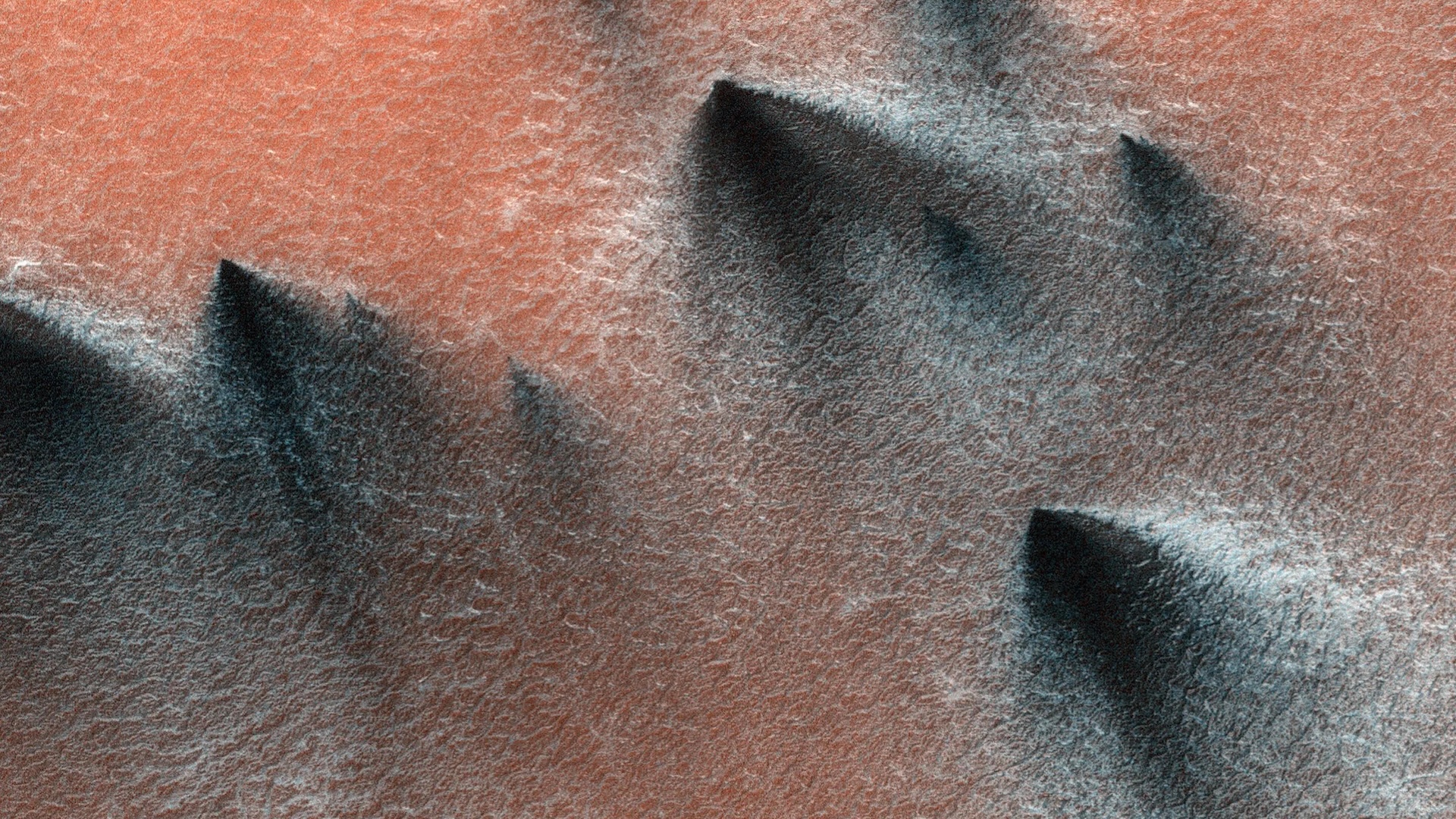
What it is: Geysers of gas and dust on Mars
Where it is: The south polar region of Mars
When it was shared: Jan. 29, 2025
Why it's so special: These odd, fan-like features on the surface of Mars are geysers of gas and dust near the planet's south pole that are visible only in springtime on the Red Planet. This image was taken by the Mars Reconnaissance Orbiter (MRO) in 2018 and was reshared by NASA recently.
During winter on Mars, carbon dioxide ice accumulates near the surface. According to NASA, carbon dioxide ice is transparent, and sunlight that gets through it is absorbed at the base of the icy layer. As the sun rises higher into the sky and spring begins, carbon dioxide ice begins to warm and turn to vapor. That vapor then escapes through weaknesses in the ice and erupts in the form of geysers. These eruptions sometimes leave dusty, jagged streaks, nicknamed "spiders on Mars."
Related: Hundreds of black 'spiders' spotted in mysterious 'Inca City' on Mars in new satellite photos
Mars has four seasons similar to those on Earth. That's because Mars' orbit spins on an axis tilted by 25.2 degrees (similar to Earth's 23.5 degrees), meaning different parts of Mars get differing amounts of sunlight as the planet orbits the sun. However, because Mars takes 687 Earth days to orbit the sun, the seasons last around twice as long as they do on our planet.
There's something else about Mars' orbit that makes the seasons different. Because the planet's orbit of the sun is slightly elliptical, there's a significant difference between Mars' closest and farthest point to the sun.
According to the European Space Agency, Mars is closest to the sun during summer in its southern hemisphere, making that season shorter and hotter than summer in the North. Conversely, winter in the southern hemisphere occurs when Mars travels at its slowest and farthest from the sun, making it longer and colder than winter in the North.
This stunning image comes from the High Resolution Imaging Science Experiment camera on the MRO, which launched on Aug. 12, 2005, and began orbiting Mars on March 12, 2006.
For more sublime space images, check out our Space Photo of the Week archives.







